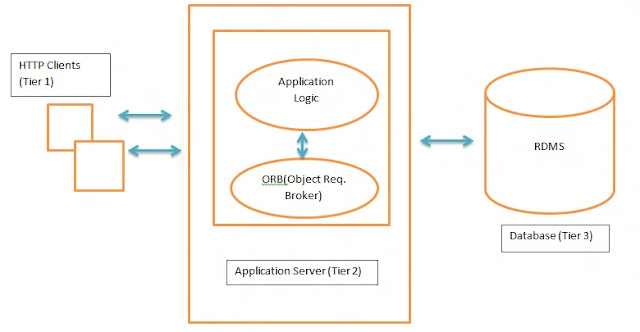Client/Server Architecture for DBMS
Client/Server Computing represents a model wherein requests are made at one end & the client end and provided at another server end.
A client is defined as a requester of services & Server is defined as the provider of services. A single machine can be both client/server prog. architecture.
One-Tier Computing Model
Two Tier Computing Model
Client <==============================> Server
Traditional database client/server architecture is based on 2 Tier computing model. This Model consists of a client tier and a database server tier.
Processing tasks and application logic are shared b/w database server & client.
Disadvantage
The client in 2-Tier are fat client( application responsible for its processing power & app. logic).
This makes the clients costly to maintain. Clients can be operated on diff. platforms, results in the deployment of platform specific versions of applications.
Three Tier Computing Model
Client <=============> Middle Tier <====================> Server
[amazon_link asins=’0070050767′ template=’ProductLink’ store=’encrypt0f-21′ marketplace=’IN’ link_id=’d14404f5-7ae3-11e7-9965-9f46071371e8′]To overcome the 2-Tier computing model disadvantages, 3-Tier computing model was introduced ( A middle tier exists b/w clients and the database server). The middle tier consists of an application server that contains the bulk of application logic. Clients in this model are thin clients.
Thin Clients: Application that does not have much of processing power or application logic, rather it provides a User Interface(UI) only.
As the middle tier in a three-tier architecture, the application provides the optimal interface b/w clients and database. It supports the deployment of distributed component applications based on CORBA(Common Object Request Broker Architecture) standard.











